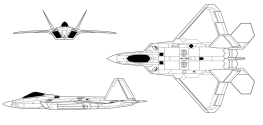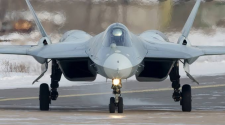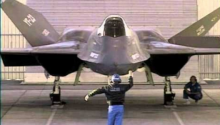Stealth is probably better than the Su-57, but mainly because the Russians don't care that much. The J-20, contrary to what people think, does not have planform alignment on the canards (the canard angle to the opposite wing is not 0), and it has ventral fins sticking out.
It is quite possibly as stealthy as the F-22, but compared to the F-35, which is a smaller platform, it'd be much more challenging. Chinese analysts have already admitted that it's not as stealthy as the F-35, and hopes to use its stronger radar to compensate. And that's only in radar stealth bands. The IR stealth is going to be worse as it doesn't have flat nozzles like the F-22 does, and it has greater total engine power than the smaller F-35. And since the J-20 is high-speed optimized, once it goes high-speed (Mach 0.9 to Mach 1.5), it becomes rather bright on IR sensors.
As for sensor suite, it has an advantage over the F-22 in that it has both EOTS and EODAS, but the F-22 is has been upgraded to an IRST itself, in place of its MAWS.
Compared to the F-35, it has a larger radar, but notably, the EOTS aperture on the J-20 is not larger than on the F-35, implying that the J-20 won't have an IR sensor superiority compared to the F-35, a key design error that should have been remedied.
===
Kinematically speaking, first, when it comes to WVR agility, as I've said before, you're dead if you show up on sensors. Short-ranged WVR missiles track very well using your IR signature, or a UV displacement signature. DIRCM can work, but put enough missiles on the target and DIRCM gets overwhelmed.
And when it comes to WVR agility, we're trying to quantify the J-20's agility. The overall airframe design (i.e, increased lift from the LERX-Canard-LERX-Wing formula) only increases lift at high AoA; it's an excellent ITR performer that relies on engines for STR. Being in the low speed regime where you're not 9G capped, by the way, also means you're WVR missile bait.
===
But that's like latenlazy's agenda. He thinks that the J-20's agility advantages (and the F-35 is actually quite agile on low fuel, which it'll have when it's defending a base or in short range) are sufficient to make it an effective air superiority platform. I, on the other hand, think it's equal to the F-35 (at best) because future air-to-air combat will be dependent on BVR-type combat using sensors and stealth, including datalinked sensors from AEW&C (H-20).
That said, however, even if you buy (and we can argue about this endlessly) my argument about the J-20 not being such an effective air superiority fighter, it HAS exceptional range. As I've told Indians, you can base J-20s in Chengdu, and they'd be able to fly to either the Indian border or Taiwan on internal fuel. It makes it so that the Indians can't even dream of hitting J-20s in Chengdu on the ground. The same applies to the Americans; they can try to launch Tomahawks or whatever newfangled strike missile they've come up with, but their strike missile range is dwarfed by the J-20's range, either with or without tanks.
This makes the J-20 an excellent defensive fighter simply because you can have multiple lines of J-20 bases, some of which are intended to be offensive, others which are intended to be defensive. At 2000 km combat radius (based on 5500 km and subtracting for external fuel tanks, then using a .4 modifier), you can actually further extend the combat radius by using bases further afield; take off from Chengdu, land in Jiangxi, and you can supercruise part of the way (likely supercruise range will be around 1100 km) because you simply don't need the fuel that'd otherwise be used to return to base.
===
In other words, like the Mitsubishi Zero, the key selling point of the J-20 is its sheer range. No other fighter, barring perhaps the classified PCA aircraft, can go as far as the J-20 can, allowing it to strike (with weaker strike missiles, of course) further than other aircraft can, or defend Chinese airspace from further inland than other aircraft can. Even if you compare it to the Su-57 on internal fuel, you're still looking at another almost 50% combat radius.
For humor's sake, the range of the Mitsubishi Zero is roughly 1900 km. If you look at most fighter aircraft to date, most of them are short-ranged on internal fuel. What we finally have with the J-20 is a modern jet aircraft that can match the Zero when it comes to combat radius.
It is quite possibly as stealthy as the F-22, but compared to the F-35, which is a smaller platform, it'd be much more challenging. Chinese analysts have already admitted that it's not as stealthy as the F-35, and hopes to use its stronger radar to compensate. And that's only in radar stealth bands. The IR stealth is going to be worse as it doesn't have flat nozzles like the F-22 does, and it has greater total engine power than the smaller F-35. And since the J-20 is high-speed optimized, once it goes high-speed (Mach 0.9 to Mach 1.5), it becomes rather bright on IR sensors.
As for sensor suite, it has an advantage over the F-22 in that it has both EOTS and EODAS, but the F-22 is has been upgraded to an IRST itself, in place of its MAWS.
Compared to the F-35, it has a larger radar, but notably, the EOTS aperture on the J-20 is not larger than on the F-35, implying that the J-20 won't have an IR sensor superiority compared to the F-35, a key design error that should have been remedied.
===
Kinematically speaking, first, when it comes to WVR agility, as I've said before, you're dead if you show up on sensors. Short-ranged WVR missiles track very well using your IR signature, or a UV displacement signature. DIRCM can work, but put enough missiles on the target and DIRCM gets overwhelmed.
And when it comes to WVR agility, we're trying to quantify the J-20's agility. The overall airframe design (i.e, increased lift from the LERX-Canard-LERX-Wing formula) only increases lift at high AoA; it's an excellent ITR performer that relies on engines for STR. Being in the low speed regime where you're not 9G capped, by the way, also means you're WVR missile bait.
===
But that's like latenlazy's agenda. He thinks that the J-20's agility advantages (and the F-35 is actually quite agile on low fuel, which it'll have when it's defending a base or in short range) are sufficient to make it an effective air superiority platform. I, on the other hand, think it's equal to the F-35 (at best) because future air-to-air combat will be dependent on BVR-type combat using sensors and stealth, including datalinked sensors from AEW&C (H-20).
That said, however, even if you buy (and we can argue about this endlessly) my argument about the J-20 not being such an effective air superiority fighter, it HAS exceptional range. As I've told Indians, you can base J-20s in Chengdu, and they'd be able to fly to either the Indian border or Taiwan on internal fuel. It makes it so that the Indians can't even dream of hitting J-20s in Chengdu on the ground. The same applies to the Americans; they can try to launch Tomahawks or whatever newfangled strike missile they've come up with, but their strike missile range is dwarfed by the J-20's range, either with or without tanks.
This makes the J-20 an excellent defensive fighter simply because you can have multiple lines of J-20 bases, some of which are intended to be offensive, others which are intended to be defensive. At 2000 km combat radius (based on 5500 km and subtracting for external fuel tanks, then using a .4 modifier), you can actually further extend the combat radius by using bases further afield; take off from Chengdu, land in Jiangxi, and you can supercruise part of the way (likely supercruise range will be around 1100 km) because you simply don't need the fuel that'd otherwise be used to return to base.
===
In other words, like the Mitsubishi Zero, the key selling point of the J-20 is its sheer range. No other fighter, barring perhaps the classified PCA aircraft, can go as far as the J-20 can, allowing it to strike (with weaker strike missiles, of course) further than other aircraft can, or defend Chinese airspace from further inland than other aircraft can. Even if you compare it to the Su-57 on internal fuel, you're still looking at another almost 50% combat radius.
For humor's sake, the range of the Mitsubishi Zero is roughly 1900 km. If you look at most fighter aircraft to date, most of them are short-ranged on internal fuel. What we finally have with the J-20 is a modern jet aircraft that can match the Zero when it comes to combat radius.
Last edited:



